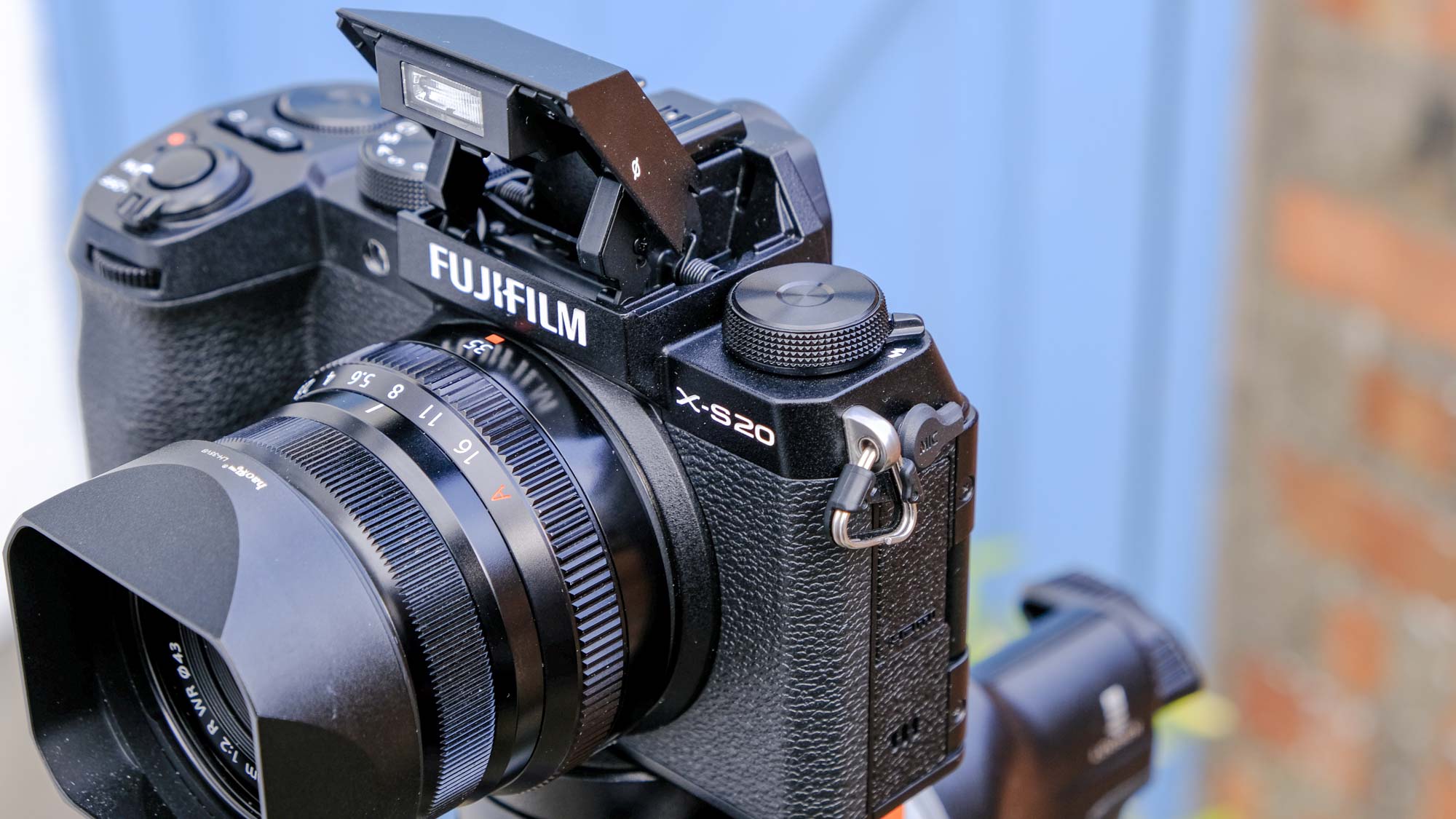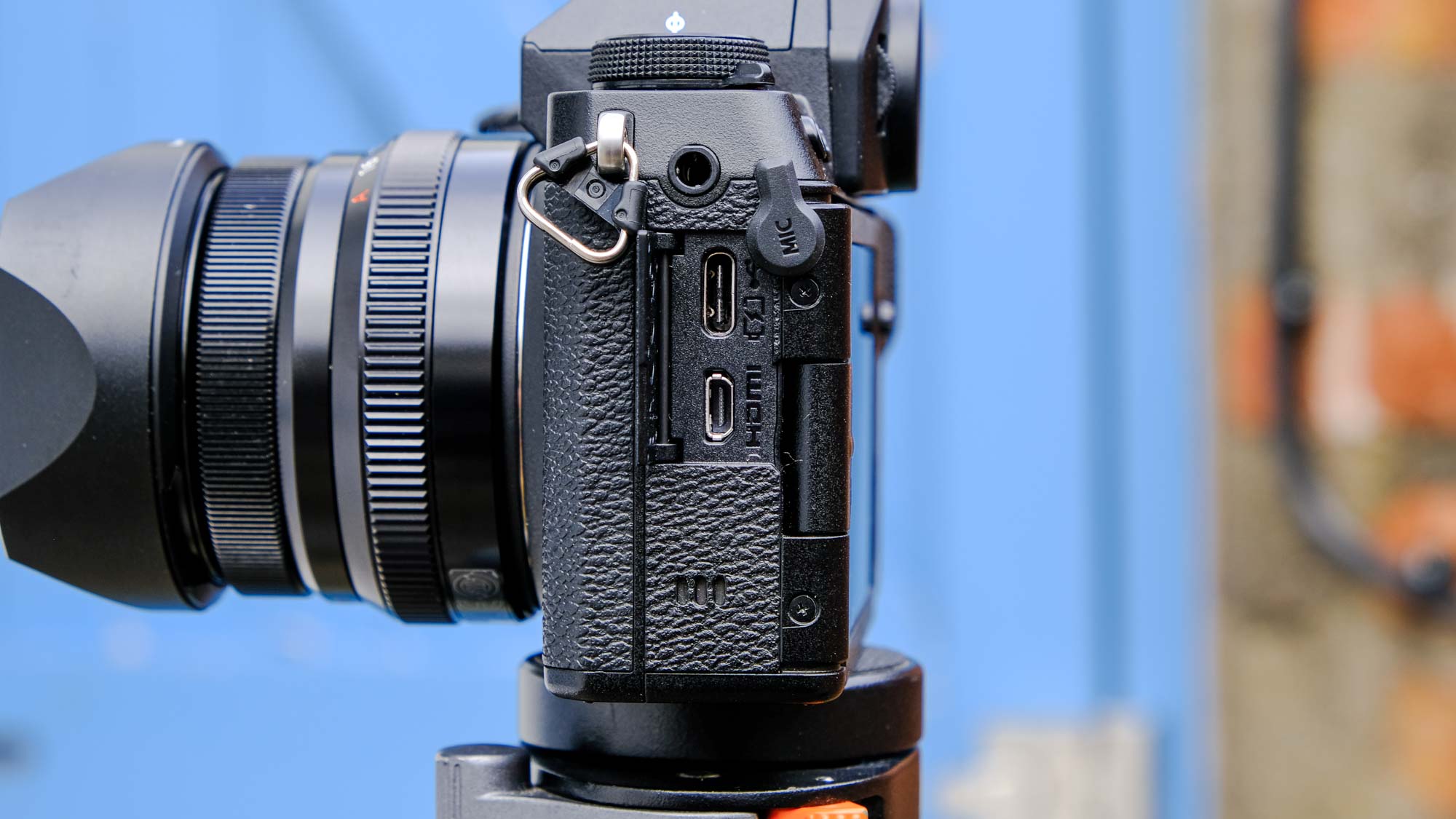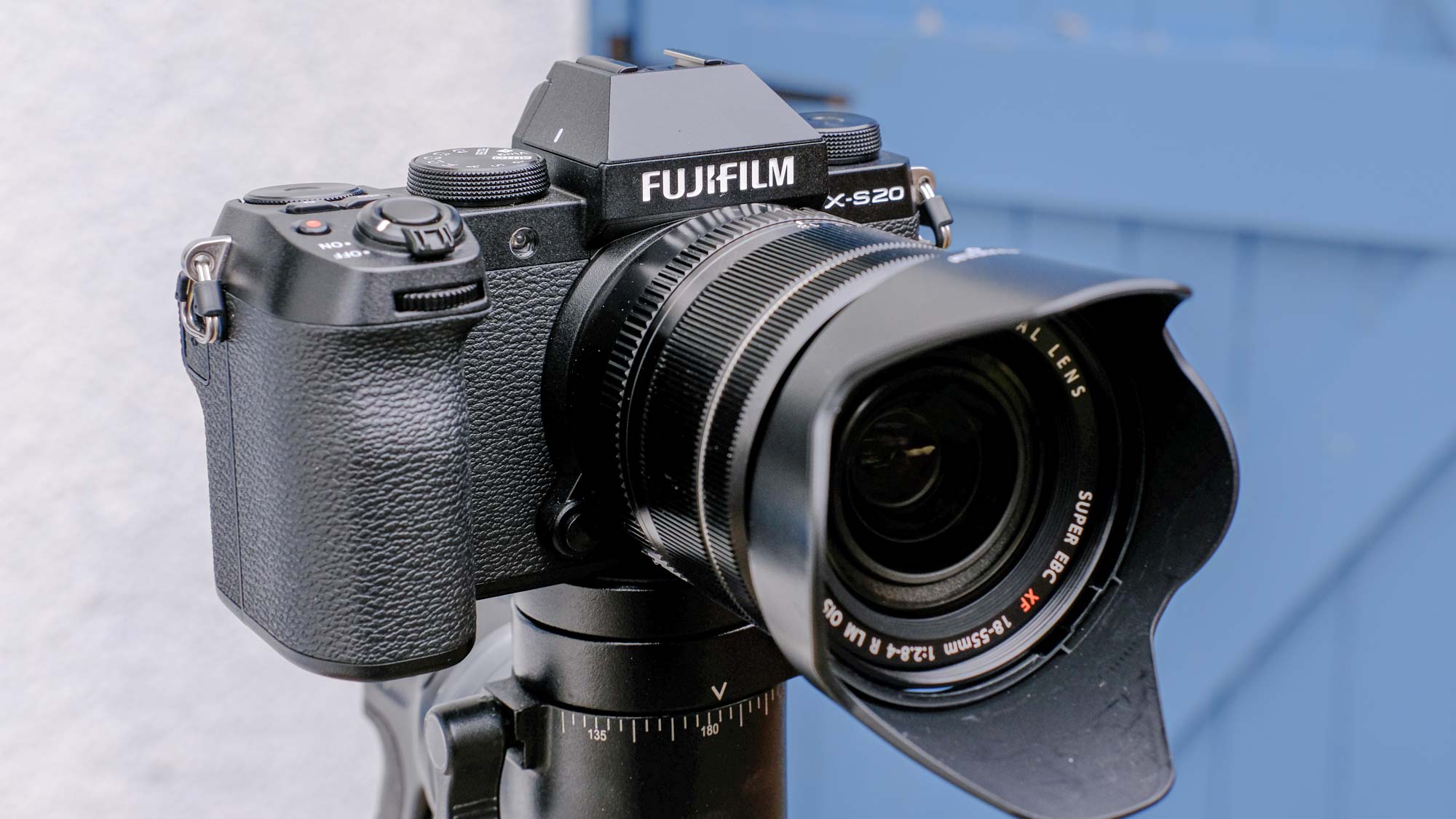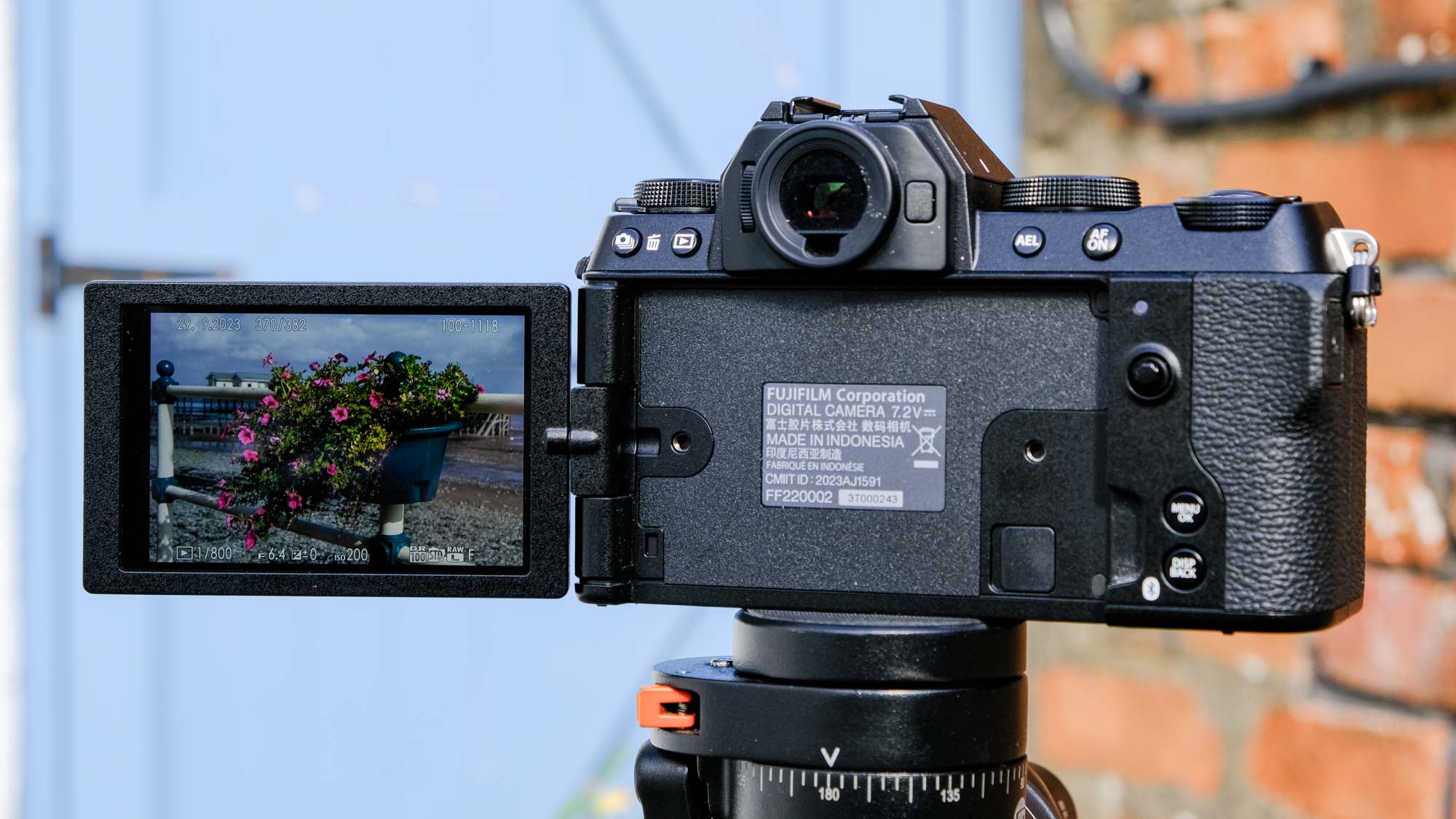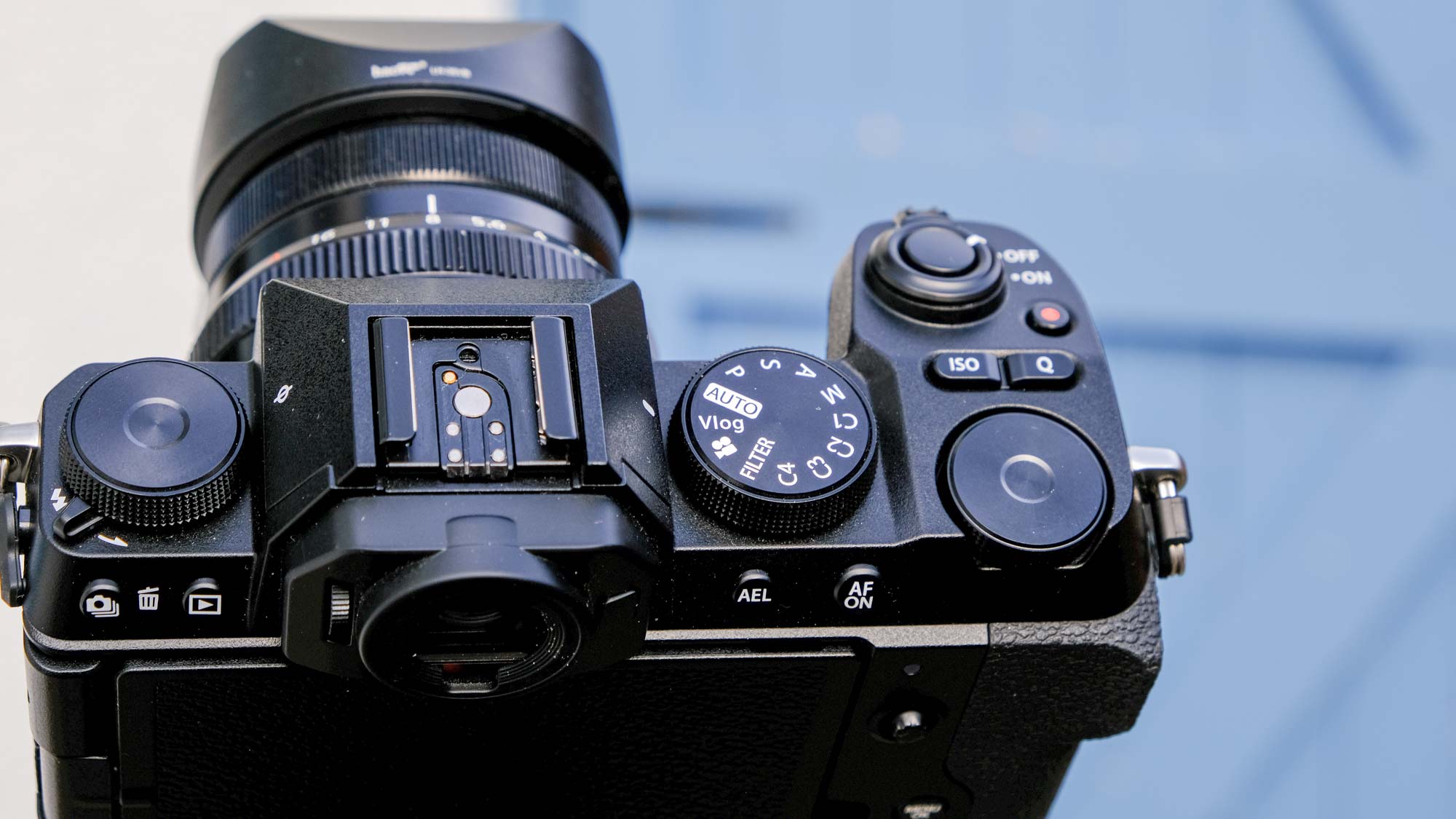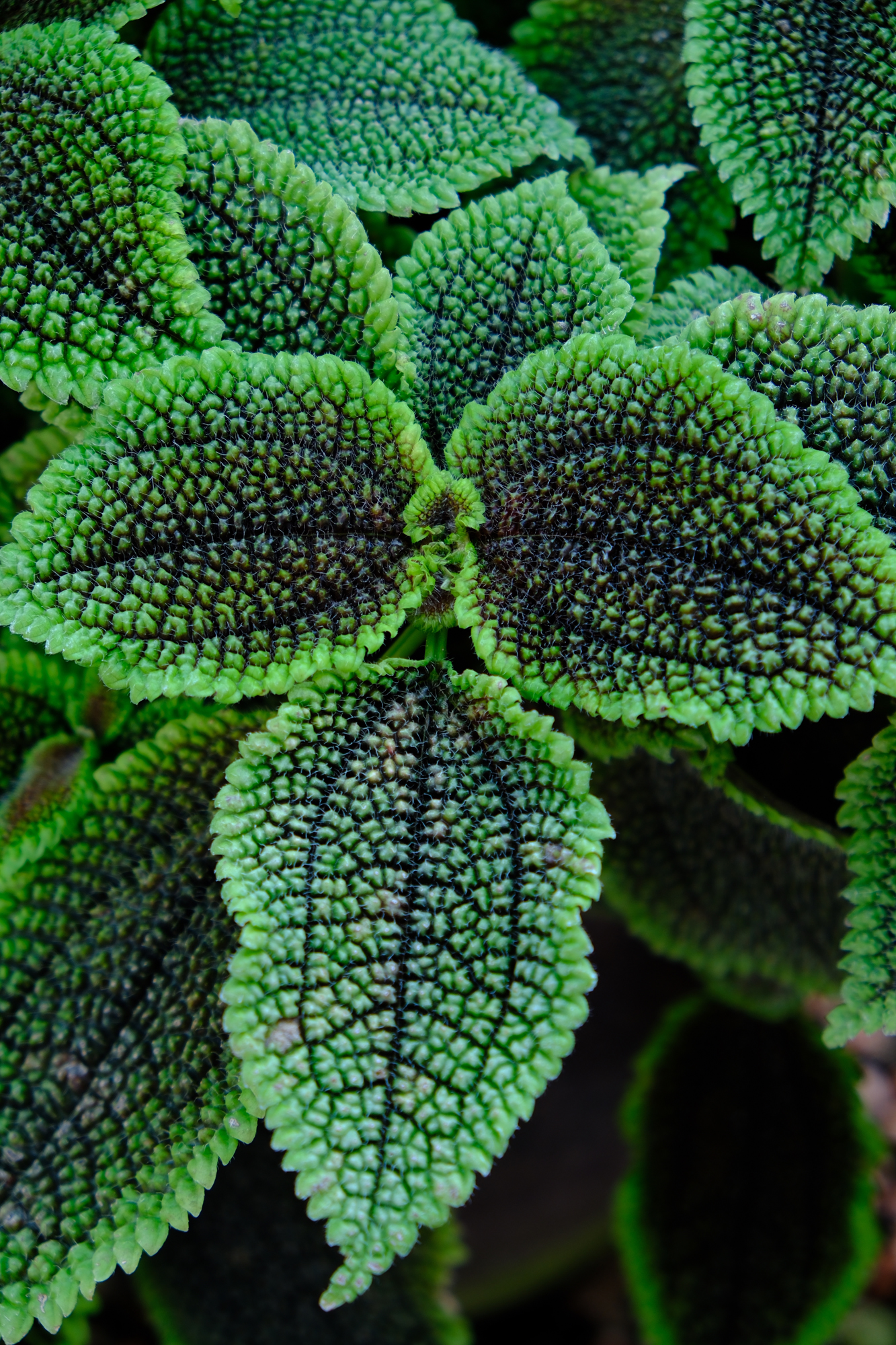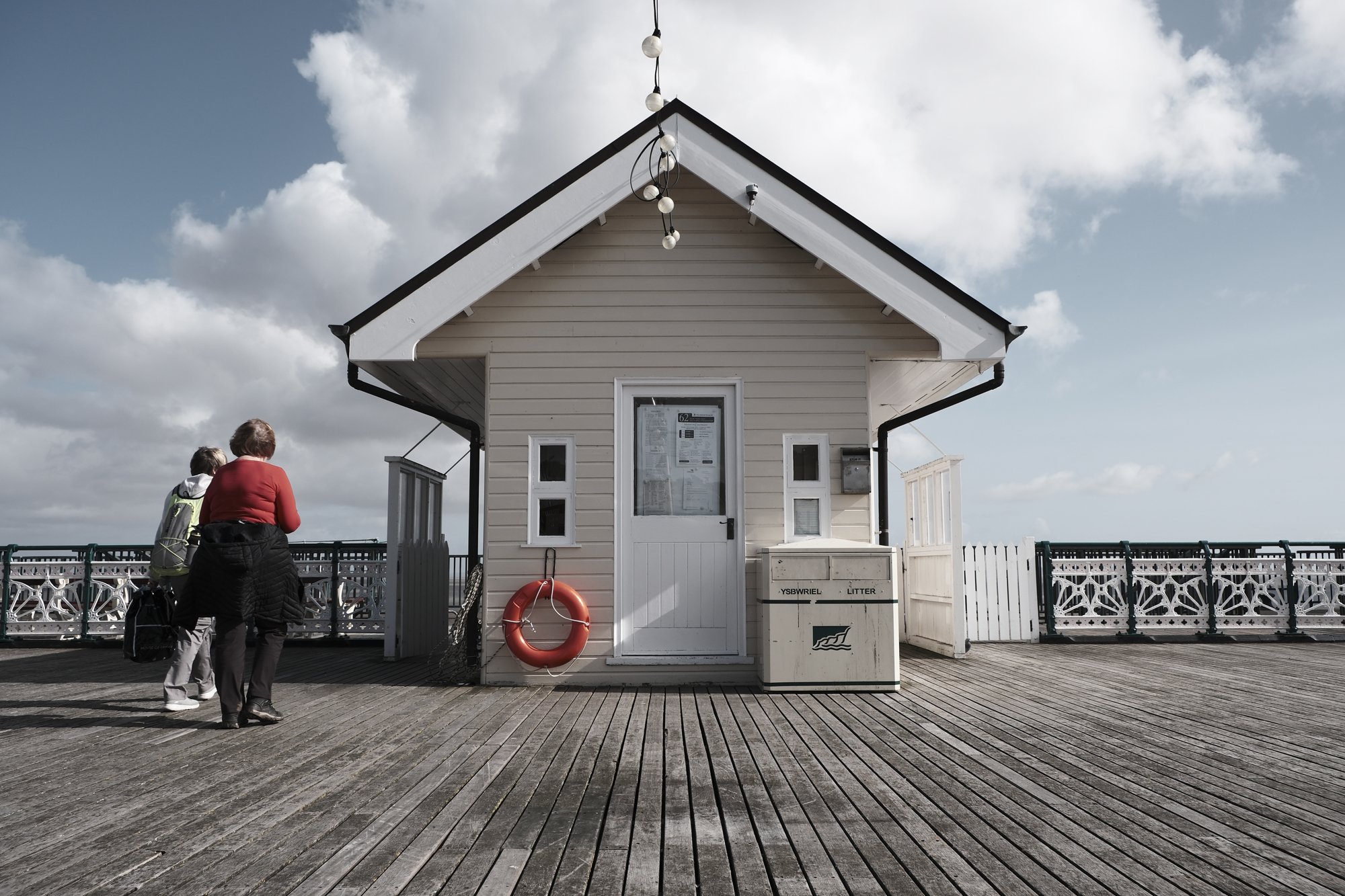Tom's Guide Verdict
The Fujifilm X-S20 is a phenomenal mid-tier camera, which gives its target market of enthusiast hybrid shooters everything they could need. It’s worth the upgrade from the X-S10, but only if you’re shooting video.
Pros
- +
6.2K/30p video
- +
Beautiful images
- +
Great IBIS
- +
Lovely build and design
- +
Lots of creative options
- +
Cheaper than rivals
Cons
- -
More expensive than predecessor
- -
Only one SD slot
- -
Slightly awkward controls & menu
Why you can trust Tom's Guide
Sensor: 26.1MP APS-C X-Trans CMOS 4
Image processor: X-Processor 5
Image stabilization: 5-axis, up to 7-stops
Autofocus: Intelligent Hybrid AF (contrast/phase-detection)
Viewfinder: OLED EVF, 2.36 million dots
Display: 3.0-inch Vari-Angle LCD Touch Screen, 1.84 million dots
ISO: 160-12,800 (expandable to 80-51,200)
Max video resolution: 6.2K at 30p
Ports: USB Type-C, Micro-HDMI, 3.5mm stereo, 2.5mm remote, hot shoe
Memory: 1x UHS-II SD/SDHC/SDXC
Wireless: Wi-Fi, Bluetooth
Shutter speed: 1/4,000 mechanical; 1/32,000 electronic
Shooting speed: 8fps mechanical; 30fps electronic
Battery life (CIPA): 750 shots
Size/weight (body + battery/card): 5 x 3.4 x 2.6 inches; 17 ounces
The Fujifilm X-S20 is the successor to the original X-S10, which was a compelling mid-range package for enthusiasts who wanted to dabble in both photography and video. The X-S10 produced lovely images and 4K/30p video, and was one of the most affordable ways to get a new camera with in-body image stabilization (IBIS).
Since that camera launched, though, the market for mid-range APS-C hybrid cameras has matured. Canon launched the EOS R7 in 2022 and Sony launched the a6700 earlier in 2023. Both are APS-C format, feature IBIS and will shoot 4K/60p. Both are aimed at enthusiast hybrid shooters who want to focus on video as much as photography, if not more. And both can rightly be considered among some of the best mirrorless cameras around.
The X-S20 is Fuji’s answer to that changing market. It keeps all the positives of the X-S10, with a few choice upgrades — namely to video performance and autofocus — to bring what was an already fantastic platform up to spec with the latest competition.
So how does this camera stack up against its fierce competition? Find out in our Fujifilm X-S20 review.
Fujifilm X-S20 review: Price and availability
The Fujifilm X-S20 was released in June 2023, and costs $1,299 / £1,249 in body-only form. This is a chunk more than the X-S10, which cost $999 / £949 at launch. While the X-S10 could fairly be compared against lower-spec intermediate cameras like the Canon EOS R10, the X-S20’s higher price pushes it into competition with the more advanced Sony a6700 ($1,399) and Canon EOS R7 ($1,499), undercutting both.
There are two kits available: you can have the X-S20 with the XC 15-45mm F3.5-5.6 OIS lens for $1,399 / £1,349, or with the XF 18-55mm F2.8-4 OIS lens for $1,699 / £1,599. It’s well worth spending the extra for the XF18-55mm lens, which offers better build quality, more telephoto zoom reach and a wider f/2.8 maximum aperture. It also features an aperture control ring, something veteran Fuji users struggle to live without, especially if ever using the lens on a camera with few control dials, like the Fujifilm X-E4.
The X-S20 grants you access to fewer AF lenses than with Sony — whose collection of compatible first and third party mirrorless AF lenses is unrivaled — but more than Canon, which has not (at the time of writing) opened up its RF lens mount to third party AF lenses.
Get instant access to breaking news, the hottest reviews, great deals and helpful tips.
Fujifilm X-S20 review: Design
The Fujifilm X-S20 looks identical to the X-S10, which is no bad thing. Both take Fuji’s characteristic retro styling and add a contemporary edge, with sleek black command dials and a chunky grip, all without sacrificing the nostalgic charm.
Build quality is fantastic. Dials all clunk weightily, with buttons providing good haptic feedback. The top flash release is super satisfying, springing upward forcefully when the lever is pulled. There’s a very gratifying snap on the spring-loaded USB-C/micro-HDMI port cover, too.
The X-S20 has a lot of metal in its body, giving a heft and sturdiness. Add in the IBIS system, and the X-S20 isn’t the lightest at 17 ounces (491g). It’s by no means a heavy camera, though, and I had no trouble carrying it for several hours during testing. At 5 x 3.4 x 2.6 inches, it’s relatively compact, but comfortably holds a large zoom lens thanks to the grip. My only gripe is how short the X-S20 is: if you have large hands like me, your pinky finger dangles awkwardly below the body, so you may find the taller X-T5 more comfortable.
There’s a 1.84M dot rear LCD, a higher resolution than the displays on the a6700 and R7. The viewfinder is a 2.36M dot OLED EVF, the same as both rivals, and packs enough resolution for detailed focus checking and playback. There is no eye cup, though, causing issues shooting through the EVF in bright sunlight.
The X-S20 features micro-HDMI, USB-C, microphone and headphone ports, plus Wi-Fi and Bluetooth functionality — plenty of connectivity for vlogging and content creation. There’s only a single UHS-II card slot, though, stamping it as an enthusiast tier camera. SD cards very rarely fail, but it does happen, and Fujifilm cameras in particular have experienced issues in the past (Fuji publishes lists of cards to use to avoid catastrophic failure). If paying clients are on the line, or even on the horizon, the EOS R7’s dual slots are a necessity.
Fujifilm X-S20 review: Controls
The Fujifilm X-S20’s controls are relatively well laid out, except for the Q and Fn buttons. The Q button is not as awfully placed as on the Fujifilm X-T30 II, but still demands an awkward bend of the index finger. I found the Fn button by the viewfinder a total pain to get to, requiring a repositioning of the camera and stretching of the thumb.
While most inputs are entirely remappable, you can’t fully customize the front and rear main command dials on the right of the camera, which is annoying. These are locked to either shutter or aperture in Manual mode. If you’re shooting with Fuji XF lenses, which have aperture control rings, you then always have either one dead dial or two controlling the shutter, which is a total waste. Still, having three dials means you can theoretically have all three primary exposure parameters (shutter, aperture, ISO) mapped to a dial, which I like.
Fuji’s menu system is a little convoluted and cumbersome. If you’re new to the system, it’ll take some getting used to and can be frustrating. Even when you’re used to it, you’ll often still be left trying to figure out where something is, or why something else was put in a certain place. For example, the ‘Shoot without card’ setting is oddly located in the ‘Button/Dial settings’ menu. It isn’t the worst menu I’ve used, but it could do with some tidying up to rival Canon, Sony and LUMIX systems, which are all much more intuitive.
Fujifilm X-S20 review: Autofocus performance
The Fujifilm X-S20 features Fuji’s X-Processor5 — the same imaging processor found in the Fujifilm X-T5. Among other things, this seriously improves AF over the X-S10. While the X-S10 featured basic detection and tracking modes, the X-S20 has modes for animals, birds, cars, motorcycles and bikes, planes and even trains. This puts the Fuji on a par with the Canon EOS R7, which offers similar levels of detection.
I tested the animal detection and tracking autofocus by photographing (using 20fps high speed burst) one of my ex-racing greyhounds, Nutty, running at about half pace, so 20 mph. The X-S20 was able to detect the dog in the frame, but wasn’t able to track her as well as I’d have liked. The focal point usually lagged behind the dog, meaning I came away with around 1 in every 20-30 shots with her face in acceptable focus.
For slower-moving targets, it’s a different story. Despite no specific animal Eye AF mode, in the image of Nutty below, the camera detected, locked onto and tracked her eye. For people and portraiture, it’s also extremely capable, tenaciously locking onto eyes and faces.
For this reason, Fuji has introduced a Product Priority mode to the camera for video, which essentially tells the camera to deprioritize faces and eyes, instead favoring anything that appears in the foreground. This is similar to product modes in the Canon EOS R50 and Sony ZV-1F vlogging cameras, and will be extremely handy for anyone who wants to shoot product demo or unboxing content for social media and YouTube.
In non-detection mode, the autofocus did a relatively good job at accurately switching focus. I tested it out using a Fuji 35mm prime, switching from foreground to background in the video of the pier. The camera did a good job at automatically switching focus, although was a little let down in the test footage by the lens hunting and breathing.
There’s now also an Auto mode on the main mode dial, which sets the camera into automatic subject detection and tracking. I love the automatic subject detection of Canon cameras, which can stop you missing shots when changing modes. Unfortunately, the X-S20’s Auto mode comes at the expense of manual controls, locking the camera in full Auto exposure, which sucks.
Fujifilm X-S20 review: Image performance
The X-S20 features Fuji’s 26.1MP back-illuminated X-Trans CMOS 4 sensor, which we already know well from numerous recent Fuji cameras. It’s also the same sensor as that found in the original X-S10. The newer X-Processor 5 gives improved image processing and the HEIF compression format.
As with any camera using this sensor, stills are lovely. In Provia (the camera’s “Standard”) colors are bold and vibrant but without feeling artificial. In the image of the planter below, the pink petals really pop, as they did in real life, while the muted greens and blues of the railings and sky have not been overly saturated.
The X-S20’s 26.1MP sensor may have 6 million fewer pixels than the EOS R7’s 32.5MP sensor, but still has enough resolution for highly detailed shots, moderate cropping and small to medium sized prints. In the image of the plant leaves below, you can make out the intricate patterns and texture of the leaves. This image was shot in the Velvia Vivid color profile, which increases the saturation and vibrancy of colors and is perfect for landscape or nature photography.
The X-S20 features 19 film simulation color profiles to choose from, versus the X-S10’s 18. The new addition is called Nostalgic Negative (also present in the X-T5). The image below was shot in Nostalgic Negative, resulting in warm highlights and deep shadows to mimic printed film photos.
These color profiles are beloved by Fuji fans, and give lots of creative choices for stills and video. I primarily shoot in the black and white Acros profile (demonstrated in the portrait of the dog above), which can be tweaked using red, yellow or green filters for differing levels of contrast — in addition to the Monochrome profile, this gives black and white photographers like me a good range of creative options for the look of their photos.
One of my favorite color profiles is Eterna Bleach Bypass (images above and below), which gives a high contrast, desaturated effect for a striking retro look. These profiles may seem like a gimmick to outsiders, but they can be so much fun, challenging even experienced Fuji shooters to experiment and photograph in different ways. And while you can apply the simulations in post, I find shooting with them in-camera gives better results, as you shoot with the end result in view. This “Fuji look”, as it’s sometimes referred to, is a unique feature and experience you won’t find elsewhere, and is a reason many choose Fujifilm cameras.
The X-S20’s IBIS is very effective for low light photography, especially in conjunction with an OIS lens like the 18-55mm. With that lens equipped, I took the camera out on a nighttime shoot and comfortably shot at speeds as low as ½ secs in the image of the Cardiff Senedd building below, without blur from camera shake.
The X-S20 did a solid job at capturing a wide dynamic range. The images below were taken in auto ISO, using automatic dynamic range adjustments and evaluative metering. The first image is from the RAW image file, with the camera’s Provia Standard color profile and some exposure correction applied to reveal details in shadows and highlights. As you can see, the X-S20 did a respectable job in challenging conditions and very little detail was lost. In the shadows, it captured a variety of gray and dark tones in the sky, as well as the details of the paving and benches in the foreground. In the highlights, it captured most of the brightest lights, blowing out just a few highlights in the windows and clock face.


The second photo is the out-of-camera JPEG of the same image, shot in Velvia Vivid. Thanks to JPEG compression, the wide dynamic range of the RAW file has been lost, but given this shot was taken at ISO 5000, visible noise is impressively low thanks to noise suppression, with no detrimental smoothing.
Fujifilm X-S20 review: Video performance
There’s no doubt that the X-S20 is designed to appeal to the video side of the hybrid market. It can shoot video at 4K/60p, a step up from the X-S10’s 4K/30p. And while the R7 and a6700 shoot 4K oversampled from 6K, the X-S20 lets you shoot in full 6.2K at 30p.
You can also choose between MOV and MP4 file formats, with either Long-GOP or All-Intra compression in 4:2:2 available all the way up to max 6.2K/30p resolution. RAW 6.2K output is supported via HDMI to an external recorder, and there’s F-Log2 for 13-stop dynamic range capture. This gives a decent array of format and recording options, allowing users to scale quality and file sizes based on their needs. Slow motion capture is available at 240fps but only up to Full HD, which is disappointing given that the a6700 can shoot 120fps in 4K.
Interestingly, Fuji offers a bolt-on fan (purchased separately) to stop overheating, but I never needed it. I shot 6.2K video clips almost continually during testing, only stopping for an empty battery, which was extremely impressive. I was shooting indoors away from sunlight, but it’s nice to know there’s a fan available if you regularly shoot in more extreme ambient temperatures.
For video, I tested out the X-S20’s IBIS using a non-OIS XF 35mm prime lens, so that optical stabilization wasn’t factored in and you can see how well the IBIS system works on its own (strangely, with an OIS lens fitted, you can’t turn OIS off while leaving IBIS on — it’s all or nothing). As you can see in the comparison videos above and below, the IBIS system delivers much smoother footage than no IBIS, especially when panning.
In addition to the Product Priority mode, Fuji has thrown in a couple of extra features to help this camera appeal to vloggers. There’s a dedicated Vlog mode on the main command dial, which does very little. Turn it and you’ll have access to an on-screen touch menu with a few key settings (although these can’t be changed during shooting).
One of those settings is the other new vlogging feature: Background Defocus mode. This essentially just locks your lens to its widest aperture, thereby hopefully blurring the background of your footage. This won’t be much use to anyone who knows their way around a camera, as it isn’t doing anything you couldn’t do in the first place. Still, it could be useful for beginners or people unfamiliar with cameras who just want a blurred background without having to figure out settings.
Fujifilm X-S20 review: Battery life
One of the key upgrades the X-S20 has over its predecessor is its battery. Instead of the NP-W126S battery of the X-S10, the new model gets the NP-W235, shared with the X-T5. It’s fantastic, rated for a whopping 750 shots. The EOS R7 is rated similarly, at 770 shots, while the a6700 comes in significantly lower at 570 shots. I found in testing that two or three hours of casual photography only used around a fifth of the charge, so you can expect all-day battery life if you’re taking photos.
Video battery life is rated at 85 minutes when shooting 6.2K which, again, is accurate. We’d recommend a spare battery, though, if you are going to be using the camera primarily for video, as that time tends to fly when you’re shooting multiple scenes or takes.
Fujifilm X-S20 review: Verdict
Out of the Fujifilm X-S20, Sony a6700 and the Canon EOS R7, it’s really difficult to give a blanket recommendation of one over the others. If paid work is on the horizon, or might be in the future, the EOS R7 is the better tool for the job, thanks to its dual card slots and higher resolution sensor.
For enthusiasts who want to prioritize video equally or more than photography, the X-S20 is just as good as both of the others, and could even be better depending on what you need. The AF is excellent, and rivals the Canon and Sony systems. But if you want higher than 4K resolution video, a range of creative in-camera color grades, or to save a little money, the Fuji has the others beat. We’d also say it’s worth the upgrade over the X-S10, but only if you’re shooting lots of video, thanks to the massively upgraded battery life and much better video specs.
All in, the X-S20 is a phenomenal mid-tier camera, which gives its target market of enthusiast hybrid shooters everything they could need.

Peter is a Senior Editor at Tom's Guide, heading up the site's Reviews team and Cameras section. As a writer, he covers topics including tech, photography, gaming, hardware, motoring and food & drink. Outside of work, he's an avid photographer, specialising in architectural and portrait photography. When he's not snapping away on his beloved Fujifilm camera, he can usually be found telling everyone about his greyhounds, riding his motorcycle, squeezing as many FPS as possible out of PC games, and perfecting his espresso shots.

